
Worldcarblog.com
2023 Kia EV6 GT Review: Affordable All-Electric Performance
Senior Editor Mike Hanley is a father of three boys; he reviews new cars, admires classic cars and has embraced the minivan lifestyle. Email Mike Hanley
The verdict: The new GT performance version of the 2023 Kia EV6 dials up the power, handling and fun of this all-electric SUV — without breaking the bank.
Versus the competition: The EV6 GT delivers better top-end acceleration performance than the Ford Mustang Mach-E GT Performance Edition and is more engaging to drive than the Tesla Model Y Long Range. It also costs considerably less than both of them.
We’ve been fairly impressed with the Kia EV6 all-electric SUV, especially when it beat the Tesla Model Y when we matched a GT-Line trim level against our long-term Model Y Long Range in a head-to-head comparison consisting of street, track and charging testing.
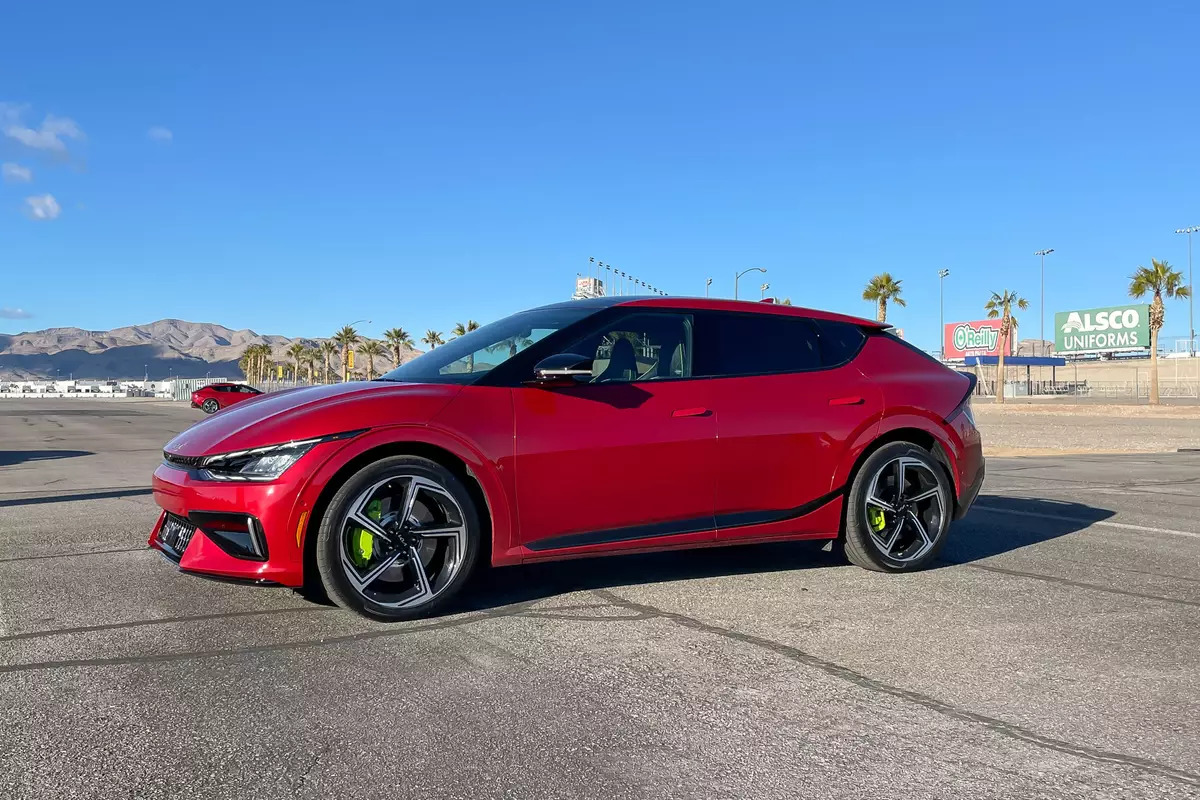
The EV6 was already a bit of a performance electric vehicle, but for 2023, Kia has a new high-performance GT trim that considerably sharpens and heightens the SUV’s demeanor. It features more powerful front and rear motors, bigger brakes, revised steering tuning, an adaptive suspension and an electronically controlled limited-slip rear differential. Exterior and interior changes are more modest but include 21-inch alloy wheels wrapped in Goodyear Eagle F1 summer tires and, inside, front sport seats with neon-green accents.
So how do all these changes affect the EV6 driving experience? To find out, I traveled to Las Vegas at Kia’s invitation to drive the EV6 GT both on the street and at the track (Cars.com pays for its own airfare and lodging when attending manufacturer-sponsored events). The changes make the EV6 a compelling performance machine, but they have tradeoffs, too, and the GT still has some of the same shortcomings as the regular EV6.
On the Street
The EV6’s GT-specific features come through in different ways in everyday driving and, combined, give it a clear performance focus. The adaptive suspension tuning is firm even in the Normal drive mode, and it gets even less forgiving when you choose GT mode. The ride isn’t as harsh (or as loud in the cabin) as in a Model Y, but you always feel the suspension reading the road and communicating back to you the pavement’s general condition. Even if you’re on a road that looks perfectly smooth, the EV6 GT will let you know that it’s not as it reacts to unseen bumps and dips.
The suspension tuning’s benefit is evident in the car’s controlled body motions, as the EV6 GT stays impressively level when charging through fast corners, and it isn’t unsettled when the road drops from under you when cresting a hill. The car’s curb weight is considerable at nearly 4,800 pounds, but around 1,000 pounds is from the high-voltage battery pack. The battery is in the floor, which helps lower the EV6’s center of gravity, and this, along with the suspension tuning, benefits handling.
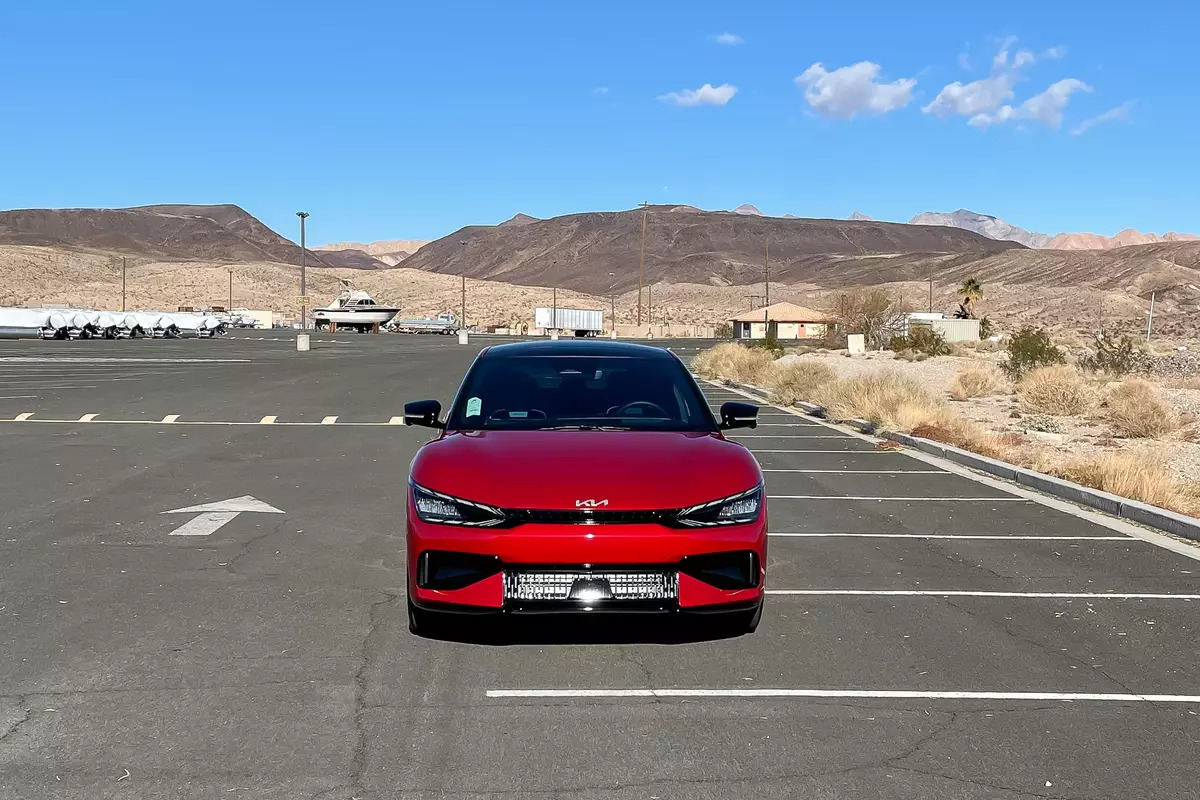
The new steering tuning also contributes to the GT’s performance feel. The steering ratio is quicker, the wheel itself has quite a bit of heft to it, and the Sport and GT drive modes further increase steering effort. There’s also a bit of feedback through the rim of the wheel to let you feel what’s happening at the tires.
The only tires the GT offers are summer performance rubber. The Eagle F1s do tend to pick up and launch small road debris like sand and pebbles at the wheel liners, creating a bit of a background soundtrack when driving, but the tires themselves aren’t noisy, and the cabin is impressively quiet overall, with wind noise only noticeably intruding above 70 mph.
The GT’s new front and rear electric motors are powerful, delivering total output of 576 horsepower and 545 pounds-feet of torque. That’s a big jump from an all-wheel-drive GT-Line, which makes 320 hp and 446 pounds-feet of torque but is also around 300 pounds lighter. Kia claims the GT is good for 0-60 mph in just 3.4 seconds and has a top speed of 161 mph.
Moving up the drive modes from Eco to Normal to Sport to GT heightens accelerator-pedal response, to the point where it’s very immediate in the GT mode. GT mode also unlocks the car’s full 576 hp; it’s limited to 429 hp in Normal and Sport, and 286 hp in Eco. GT mode offers the most aggressive acceleration response, but Normal and Sport modes also provide effortless acceleration that’s more than enough for everyday driving. Drive more conservatively, and the EV6 GT turns into a docile EV that can get decent efficiency; I observed 3.5 miles per kilowatt-hour during one 36-mile stretch of highway and rural two-lane-road driving, which is similar to the 3.3 miles per kWh that an EV6 GT-Line got during a highway range test as part of our Model Y comparison.
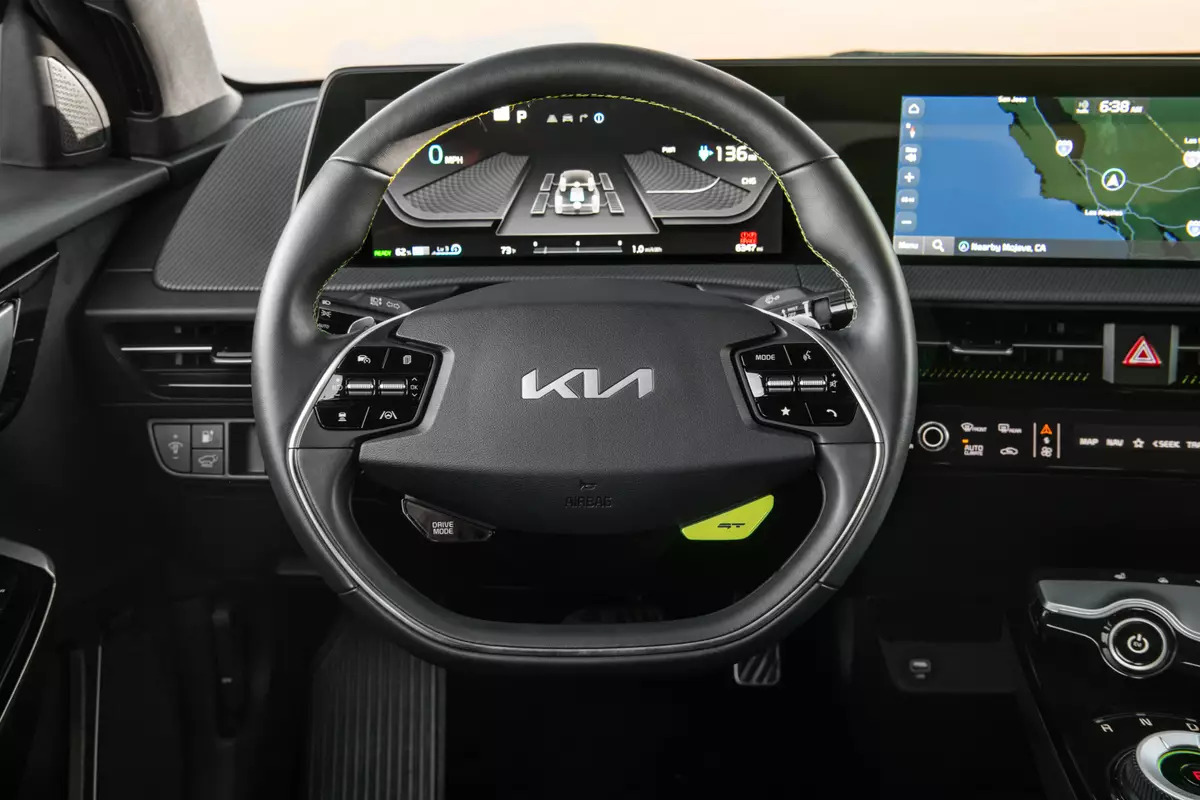
The EV6 includes adjustable regenerative braking and a one-pedal driving mode that are controlled by paddles on the steering wheel. When one-pedal driving is active, vehicle speed is controlled by the position of the accelerator pedal alone; let off on the pedal, and the car slows immediately. This turned out to be an unexpected performance feature, as it helped manage speed when entering a corner.
At the Track
I also drove the EV6 GT on a road course and drag strip adjacent to Las Vegas Motor Speedway, and both places further showcased the car’s handling and acceleration performance.
Perhaps the most surprising thing about the EV6 GT’s road course manners was just how willing, in GT mode, the rear end is to step out if you’re not careful getting back on the accelerator pedal when exiting a corner — there’s a looseness that you don’t always see in modern performance cars, let alone electric SUVs. The rear motor is powerful — it contributes 362 hp to the car’s total output — and GT mode dials back the stability system’s willingness to intervene (it can be turned off completely, too). The resulting tail happiness added a bit of unexpected fun when pushing the SUV on the track. If you really want to let it all hang out, there’s a Drift setting that uses the rear motor to create oversteer when cornering.
The EV6 GT will get around a tight road course reasonably well thanks to its well-controlled body motions and stout power, but you can feel the car’s considerable heft — particularly when mashing the brake pedal before entering a turn. The car’s beefier brakes — the front ventilated discs measure 15 inches, while the rears are 14.2 inches, and there are quad-piston front calipers — do a good job shedding speed, but you can tell they’re working hard.
The drag strip revealed just how strong the EV6 GT’s dual-motor drivetrain is, as the SUV consistently ran quarter-mile times in the 11.4-second range at around 118 mph. We’ve tested the Model Y Long Range with its Acceleration Boost unlocked versus a Genesis GV60 Performance, as well as a Ford Mustang Mach-E GT Performance Edition, at our home drag strip in Union Grove, Wis., and the EV6 GT was faster than all of them. I was particularly impressed with the EV6 GT’s ability to sustain its acceleration during the latter half of the quarter-mile; the Mustang Mach-E GT Performance Edition, by comparison, loses a considerable amount of steam, resulting in unimpressive quarter-mile performance.
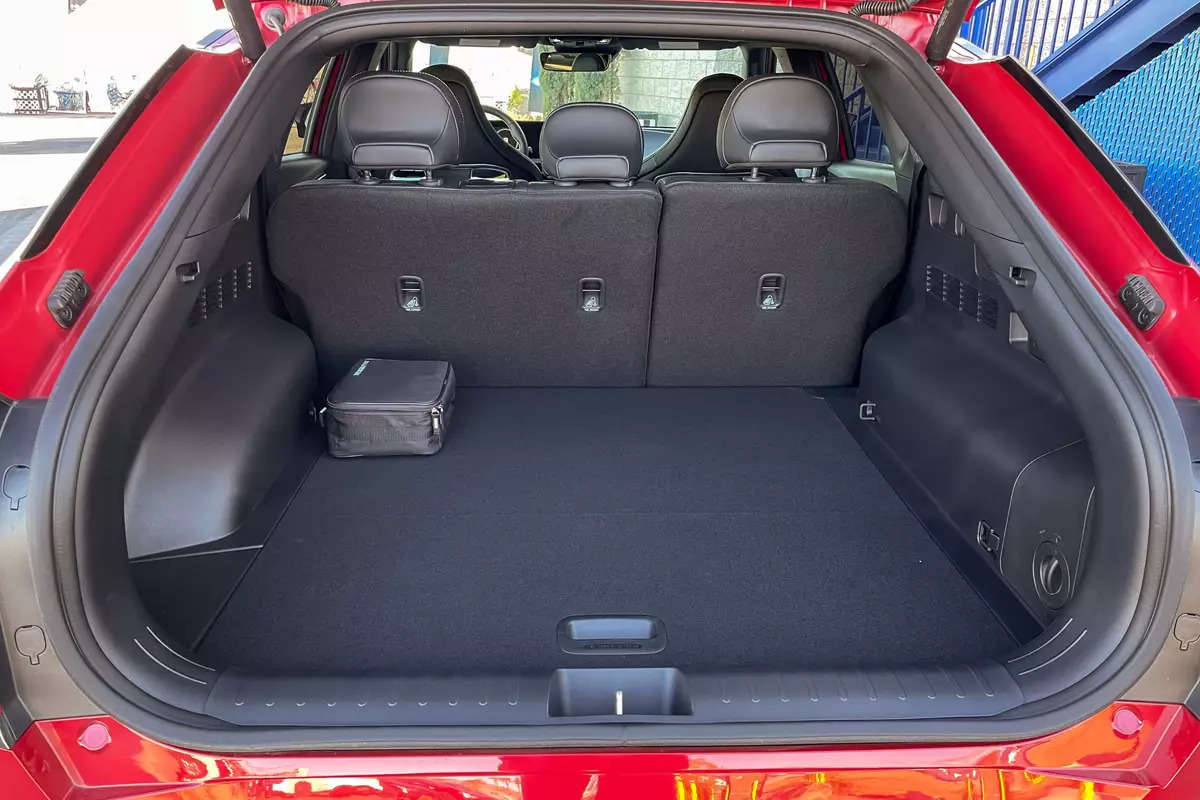
A Familiar Cabin — For Better or Worse
Apart from the new front sport seats and some distinctive green accents, the GT’s cabin is very similar to the GT-Line version of the EV6 with mostly black trim and suede-style accents. It looks stylish and sporty, and the various controls are easy enough to use.
The front sport seats are a good addition overall, as their bolstered sides do a good job holding you in place during fast corners, but they’re not perfect. For one, the seats have manual as opposed to power adjustments like the GT-Line, and though they’re heated, they lack adjustable lumbar support and ventilation, which are also GT-Line features. The seats’ overall lack of amenities seems out of place in an SUV with a starting price north of $62,000. What’s more, the seats’ hard cushioning wasn’t particularly comfortable; most seats in the cars I test agree with me, but the EV6 GT’s are a notable exception.
There are other comfort shortcomings, too, that are also present in other EV6 models and are particularly relevant if you’re taller than 6 feet, as I am. Front-seat headroom is especially limited in moonroof-equipped trim levels like the GT where it’s standard and, in the backseat, you sit with your thighs elevated at an uncomfortable angle because the seat cushion and floor are close. The rear backrest reclines, which improves overall comfort somewhat, but the combination of a black headliner and short side windows make the backseat feel a bit closed-in.
Efficiency, Range and Charging
Like other performance EVs, the EV6 GT is less efficient and has a shorter estimated driving range than its less powerful siblings, but the difference is more dramatic than its competitors. The GT gets an EPA-estimated 79 mpg-equivalent combined and has an estimated range of 206 miles, but the most efficient AWD EV6 is rated 109 mpg-e combined with a range of 282 miles. The efficiency and range spread between regular and performance versions is closer for the Model Y, Mustang Mach-E and GV60.
The Model Y Performance’s 303-mile driving range is considerably longer than the EV6 GT’s, but the Kia’s 800-volt architecture supports faster DC charging, which is an advantage we observed during our comparison test of the Model Y and EV6. The EV6 GT also comes with 1,000 kWh of complimentary energy at Electrify America chargers to use within the first three years of ownership.
The GT’s 206-mile range is modest by modern EV standards, but it should still be more than enough for most daily driving needs, making home charging the more relevant consideration. All EV6s have a 10.9-kilowatt onboard charger that Kia says can recharge the battery in around 7 hours using a Level 2 charger operating at 48 amps. Like other EV6s, the GT has a 77.4-kWh battery pack, and in earlier testing, using a Wallbox Level 2 home charger operating at 48 amps, an EV6 added 11.2 kWh of energy in an hour, so Kia’s roughly 7-hour charging time estimate seems reasonable.
A Surprising Performance Value
There’s been some hefty price hikes recently on EV offerings from Tesla and Ford, to name two automakers, and the result has made models like the Model Y and Mustang Mach-E quite expensive, with the Model Y Performance starting at $71,440 and the Mustang Mach-E GT Performance Edition priced from $77,195 (all prices include destination).
Against this backdrop, the EV6 GT is a performance bargain with a starting price of $62,695. There aren’t any option packages to boost the overall price; the only extra-cost items are some available accessories and certain paint colors.
Finding highly anticipated performance cars selling at their sticker price without any dealer markups has long been difficult, and it’s a situation that’s been exacerbated with new-car inventory remaining tight coming out of the pandemic. Kia only plans to build 2,000 to 2,500 GTs a year for the U.S., so finding one for sale at its MSRP could very well be challenging. The thrills the EV6 GT offers, however, will make it worth your while.
Source: cars.com
What will the car that caused Ford to cancel the Fiesta look like?
As expected, it is an electric crossover.
Ford recently made another difficult decision and stopped the production of the legendary model.
There is simply no place for the Fiesta in the new business policy of this manufacturer. But not for many other models, such as Ka, Focus, Mondeo, S-Max and Galaxy.
Just like that, all these cars are going into history to make way for the new models of Ford's electric division, the Ford Model E, headed by Martin Sander.
"We didn't decide to do it lightly, but we have to do something," Sander commented on Autocar's cancellation of the Fiesta. And now we know why it happens.
The factory in Cologne is going completely "electric", and the first in a series of new models is still hidden under the tarpaulin. However, thanks to Sander, we can now see its outline.
As expected, it is a crossover and arrives as a market counterpart to models such as the Skoda Eniaq.
Following the discontinuation of the Fiesta, the new entry-level model of Ford's European range will be the Puma, with the electric Puma EV set to be introduced next year, and on sale in 2025.
Ford aims to achieve annual sales of 600,000 electric cars in Europe by 2026. From 2030, every passenger Ford on the Old Continent will be electric.
Let's also mention that Ford invests 490 million dollars in Romanian plants (Puma EV) and 470 million dollars in the factory in Halewood, where electric drive systems are produced.
Volkswagen announced a new electric crossover
Volkswagen plans large investments in electromobility and announces a new crossover model. The German auto giant will invest 460 million euros in the modernization of the factory in Wolfsburg, which will prepare it for the production of electric models.
The production of models on the MEB mechanical platform should start already next year. This was confirmed by Thomas Schaefer, the first man of Volkswagen, who told the workers that the production of the ID.3 model will start next year, and that the factory will work at full capacity from 2024.
"Volkswagen represents electromobility for everyone. And Wolfsburg will be part of this success story," said Schaefer.
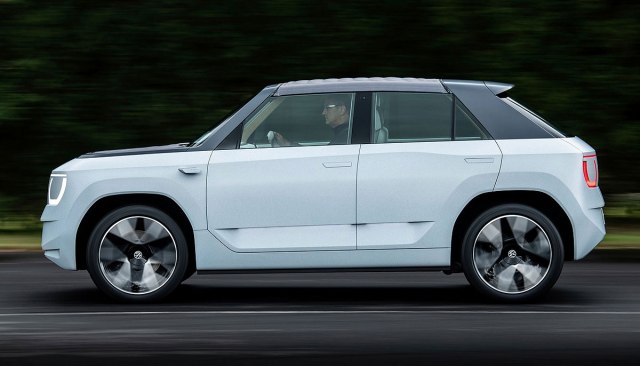
"Increasing the production capacity of the ID.3 is the first important step towards the electrification of our main plant. Along with the restyled ID.3, a new crossover is coming to the market that will use the renewed MEB platform."
The new MEB+ platform, as the biggest innovation, brings batteries with new technology, which, according to Volkswagen officials, will offer a range of up to 700 km.
Also, future models will be able to charge on 200 kW fast chargers.
"The new model will ideally complement our best-selling ID.4 and ID.5. In this way, we intend to further expand our market position and provide our customers with the high-quality vehicles they expect from us," said Šefer.
Interestingly, the MEB platform will remain in production until further notice. A total of 10 electric models have been announced until 2026, and among them is a new entry-level model with a price of 25,000 euros.
2024 Mazda CX-90
A larger and more premium three-row Mazda SUV is coming into focus as the 2024 CX-90, which is expected to debut a new turbocharged inline-six and a roomy, luxurious cabin. Mazda’s current CX-9 crossover has charmed us with its athletic handling and handsome appearance, both of which we hope will translate to the CX-90. Mazda’s premium aspirations lead us to believe that this range-topping, three-row, seven-seater will offer more luxury features than its current crop of SUV models does. All-wheel drive is likely to be standard across the range and a plug-in hybrid powertrain called e-Skyactiv will be an option. The all-new longitudinal-engine architecture that the CX-90 is built on is expected to also spawn a two-row SUV named CX-70, which should go on sale shortly after the CX-90. The CX-90 will debut in January 2023 with sales beginning later in the year.
Mazda CX-90 - What's New for 2024?
The CX-90 will be a new nameplate for the Mazda brand when it goes into production in 2023. It is unknown if the CX-90 will replace the current CX-9 in Mazda’s lineup or if it will be offered alongside the smaller three-row model moving forward.
Mazda hasn’t announced pricing or trim levels for the CX-90 but we expect it to follow the brand’s current structure and start around $40,000. When Mazda releases more information on the CX-90’s standard and optional features, we’ll update this story with those details and recommend which one represents the best buy.
Engine, Transmission, and Performance
When the CX-90 launches, it should be the first Mazda to use a new turbocharged 3.0-liter inline-six engine that is expected to be augmented by a 48-volt hybrid system. Such a powertrain is a hallmark of SUVs such as the BMW X5 and the Land Rover Range Rover Sport, signaling Mazda’s desire to move its brand even more toward the premium end of the market. A plug-in hybrid variant will also be offered, possibly using the same 323-hp setup that’s used in the European-market CX-60 SUV, which is comprised of an inline four-cylinder engine, an electric motor, and a 17.8-kWh battery pack. Much like the rest of the Mazda SUV lineup, we expect the CX-90 to come standard with all-wheel drive.
As more information becomes available, we'll update this story with more details about:
Range, Charging, and Battery Life
Fuel Economy and Real-World MPG
Interior, Comfort, and Cargo
Infotainment and Connectivity
Safety and Driver-Assistance Features
Warranty and Maintenance Coverage
2023 Kia EV6 GT First Test: A 576-HP Silent Stinger
Kia’s quickest and most powerful electric vehicle is an impressive hoot that’s looking to take on the Tesla Model Y Performance.
Now that we've finally spent time with the new 2023 Kia EV6 GT, it's wild to look back at the automaker just five years ago. It had just unveiled the Stinger, a sports sedan that was just as (if not more) entertaining than the contemporary BMW 3 Series, and worthy enough to be named a 2018 MotorTrend Car of the Year finalist. We marveled at its sharp styling, as well as its twin-turbo V-6 that launched the four-door from 0-60 mph in 4.6 seconds. If you thought the Stinger was peak Kia, however, then you thought wrong.
That's because the EV6 GT is not only the most powerful Kia to date (576 hp!), it's also the quickest, with our test car blasting from 0-60 mph in just 3.2 seconds and through the quarter mile in 11.4 seconds at a blistering 121.0 mph. Plus, it can do those deeds over and over again until you're out of electrons. With those numbers, the EV6 GT outguns an impressive list of cars we've tested. But let's stick to its main competitors, shall we? The 2021 Tesla Model Y Performance, for example, is an obvious bogey that lags behind the Kia to 60 mph and the quarter mile, at respective times of 3.5 and 12.0 seconds. The Ford Mustang Mach-E GT (with GT Performance package) was slower still—although by no means slow—needing 3.6 seconds to hit 60 mph and 12.6 seconds to cover the quarter. One staffer deemed the EV6 GT a "baby Porsche Taycan." A bold take he may want to reconsider seeing as how a comparably powered 2020 Taycan 4S was 0.2 second slower than this Kia in both acceleration benchmarks.
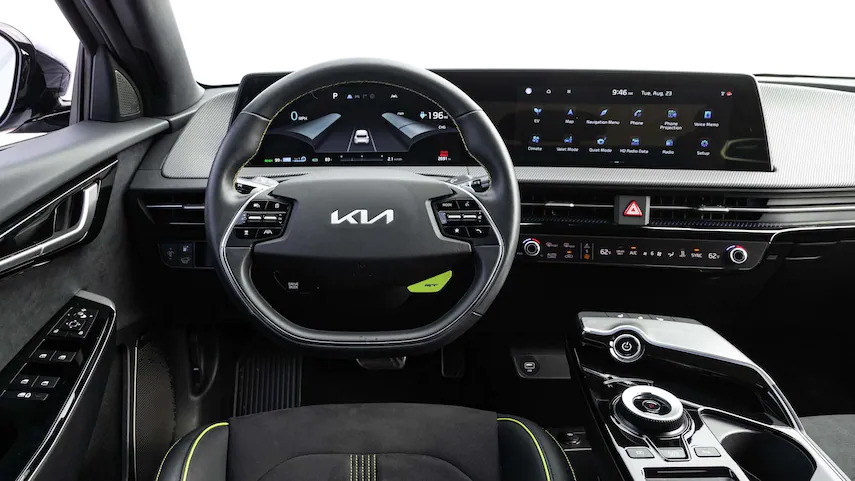
How To Slay A Tesla, Mustang, And Porsche
The EV6 GT sits atop the EV6 lineup and combines a 77.4-kWh battery pack and two motors (one up front and one at the back) with AWD traction. Power output is rated at 576 hp and 545 lb-ft of torque. That's a whopping 256 horsepower bump from the EV6 AWD GT-Line and puts it easily above the 480-horse Mustang Mach-E GT and the 456-hp Model Y Performance.
In addition to more power, Kia further elevates EV6 GT from the rest of the lineup with a number of other performance upgrades, including an electronic limited slip differential, adaptive dampers, larger front and rear brake rotors (the rears are now vented, too), and a quicker steering ratio. The top speed gets a big bump from 117 to 161 mph, as well. Stickier Goodyear Eagle F1 tires help with the work of putting all those horses to the ground.
The EV6 GT also provides drivers a long list of drive modes that tweak everything from accelerator response, steering feel, damper stiffness, the e-diff programming, stability control settings, and the power split between the front and rear motors. In addition to the Eco, Normal, Snow, and Sport modes found in all EV6s, the GT gets a Drift mode (rear motor does all the work here), GT Drive Mode (everything turned to its most aggressive setting), and a My Drive Mode that opens up further customization. Want stiff dampers but prefer the lightest steering feel? My Drive Mode lets you do just that.
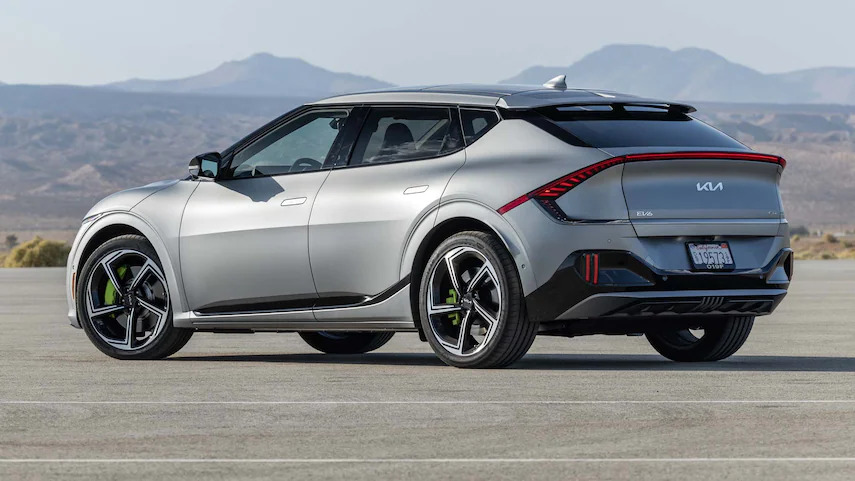
A Hefty Hoot
When exploring the handling limits of the EV6 GT it's important to note its weight, all 4,790 pounds of it. Heavy, yes, but not at all shocking compared to the recent slew of high-performance EVs, or EVs in general. The Mach-E GT, for example, tipped our scales at 4,980 pounds, while the Tesla came in at a relatively svelte 4,408. So with that said, the EV6 GT lapped our figure-eight course in 25.1 seconds with a 0.77 g average. Respectable numbers but outgunned by the Ford (24.9 seconds at 0.78 g) and Tesla (24.8 seconds at 0.79 g). What gives? We'd say it's tires, as evidenced by the EV6 GT's 0.87 g average on the skidpad, whereas the Mach-E GT and Model Y Performance were able to stick harder to the skidpad at 0.96 g and 0.91 g, respectively. Coincidentally, both those cars were fitted with Pirelli P Zeros.
But let's not fixate on those figure-eight numbers too much, because the EV6 GT is an absolute thrill to fling around the track. The rear motor is much more powerful and torquey than the front, and the stability control is surprisingly lenient in GT and even in the tamer Sport setting, which means it's quite easy to get the tail end to hang out through the corners. Body roll is significant (again, weight), but the suspension is tuned well and prevents things from feeling sloppy. The steering is quick and precise, and the brakes are solid and dependable. Stopping is augmented, too, by aggressive brake regen in GT mode that Kia says is powerful enough to provide 0.60 g of deceleration on its own.
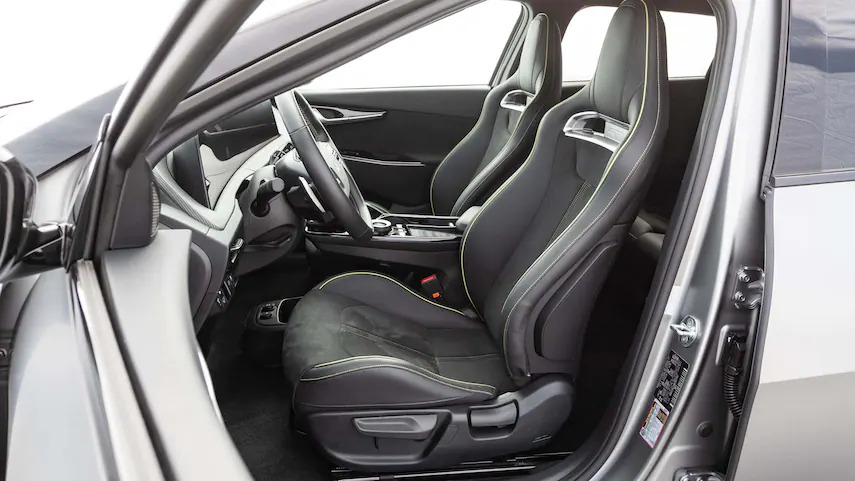
576 HP On The Daily
Despite the EV6 GT's heft and its big, 21-inch wheels, it also excels as a remarkably quiet and comfortable daily driver. The Eco and Normal drive modes smooth out throttle inputs, and the suspension is quite compliant over rough roads. The front seats are heavily bolstered and provide great lateral support during spirited driving but are comfy enough for long hauls. That said, power-adjustable and ventilated front seats (offered in lesser EV6s) are not offered on the GT; Kia says it couldn't engineer those creature comforts into the sporty seats in time for production, but hopefully that'll change in the future.
The EV6 GT is roomy, too, with plenty of front and rear legroom and adequate cargo space. The interior is well laid out with a futuristic design that complements the EV6 GT's handsome exterior. An impressive list of tech includes a head-up display with augmented reality (mostly for navigation prompts), a wireless phone charger, and a smart cruise control system that can handle stop-and-go traffic and automatically change lanes with the tap of the turn-signal stalk.
Downsides?
For starters, the range is a downside. Use and abuse Eco mode all you want, but the most you'll be able to travel on a single charge is around 206 miles. On the upside, getting most of the 206 miles back is impressively quick, so long as you're recharging at a 350-kW charger and have followed the battery preconditioning procedure. In such an instance, Kia says charging the 77.4-kWh battery pack from 10 to 80 percent capacity should only take 18 minutes, and this was pretty much spot on based on our experience. This isn't going to be an inveterate road-tripper, though.
The EV6 GT is a head-turner, but owners hoping to stand out from lesser EV6s will likely be disappointed, as neon green brake calipers, the larger wheels, and slightly reworked bumpers pretty much sum up the cosmetic differences.
Still, the EV6 GT is hard to dismiss, considering you get its prodigious performance and five-passenger practicality for $62,695. For anyone experiencing sticker shock, perhaps the 1,000 kWh of free charging at Electrify America stations (as of this writing) should take away some of that initial sting. Kia says it's only producing 2,000 to 2,500 units annually, so you may have to get scrappy if you want to get your hands on one.
Source: motortrend.com
The end for the Ford Focus
First, Ford announced the end of its Fiesta small city car, and now it has announced a new victim of its strategy.
It's the Focus, which replaced the Escort back in 1998, and since the first generation has announced itself as one of the best compact cars - which it remains to this day.
Along with the robust off-roader Bronco (from spring 2023) and pick-up Ranger, it also includes icons like the new Mustang or the large electric pick-up F-150 Lightning, according to the HAK Review.
By 2030, all Ford models should be fully electrified. SUV and crossover models with higher margins will remain on offer.
Ford intends to distribute its products in the future through four pillars. Sports models such as the Mustang or Mustang Mach E are classified as Wild Performance.
Extreme adventurers like the Bronco and Ranger Raptor will be sold as Ultimate Outdoor. The successful compact SUVs Kuga and Puma will be part of the Urban Escape group in the future. In the Active Adventure class, there will be large Explorer-style SUVs.
The Puma electric SUV is coming next year, and an electric replacement for the Kuga in 2024.
As of December 24, the rule is in force: Energy passport is mandatory for new cars
For as little carbon dioxide emission as possible.
From December 24, in addition to every new car sold in Serbia, there will be data on its consumption and carbon dioxide emissions, the so-called energy passport, said the assistant director of the Agency for Traffic Safety Mirko Koković.
Kokovic said that placing this official mark of economy is the obligation of every vehicle seller and explained that it only applies to new cars. The data will be on the left side windshield or the furthest half a meter from the vehicle, the portal bizportal.rs reports.
Koković said that the energy passport for vehicles is part of Serbia's obligations regarding the negotiation process for EU accession. He announced that there will be a public list of the most economical car models sold in Serbia on the Agency's website so that sellers can compete according to those criteria.
Koković added that there is no tendency to regulate the import of used vehicles in this or a similar way.
"The new obligations should not affect the price of the car, but it affects the awareness of customers and their desire to drive cars that consume less fuel and pollute"

















